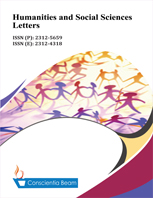Causes, Dissemination Channels, and Consequences of Corruption in Zimbabwe: Searching for a Kryptonite Solution
DOI:
https://doi.org/10.18488/journal.73.2019.72.105.122Abstract
The term corruption is a multidimensional phenomenon that encompasses abuse of power, misappropriation of public resources, fraud, bribes, collusion, and other rent-seeking activities undertaken for private gain, monetary and non-monetary. Applying a logit model to a survey of 100 individuals and 50 small-to-medium-sized private firms, this study investigates the causes, dissemination channels, and consequences of corruption in Zimbabwe for the period 1998 to 2018. Opportunity perceptions, political instability, weak public institutions, excessive market regulations, red tape, cultural tolerance, competition, poverty, risk capital, business uncertainties, high taxation rates, the existence of a shadow economy, and the level of education were found to be the main causes of corruption. The channels of its dissemination are primarily the monetary and fiscal policies that implement macro-controls. This study therefore recommends the adoption of policies that reduce excessive market regulations for private exchanges, ensure the rule of law, restore macroeconomic stability, enhance regulatory quality and efficiency, develop robust and transparent public institutions, and minimize the discretionary powers of bureaucrats and politicians. Furthermore, to improve accountability, Zimbabwe should implement policies that ensure the forfeiture and repatriation of the proceeds of corruption, early detection of corruption, and prosecution of perpetrators, without fear or favor. Finally, severe penalties should be imposed on all cases of corruption, regardless of how petty, as preventive and deterrent measures.

